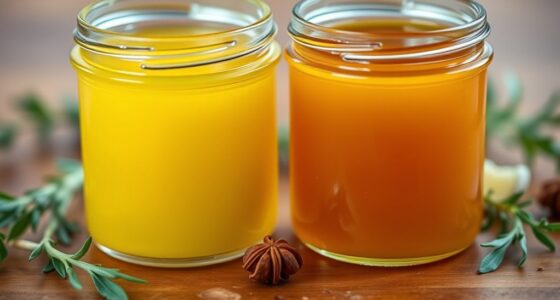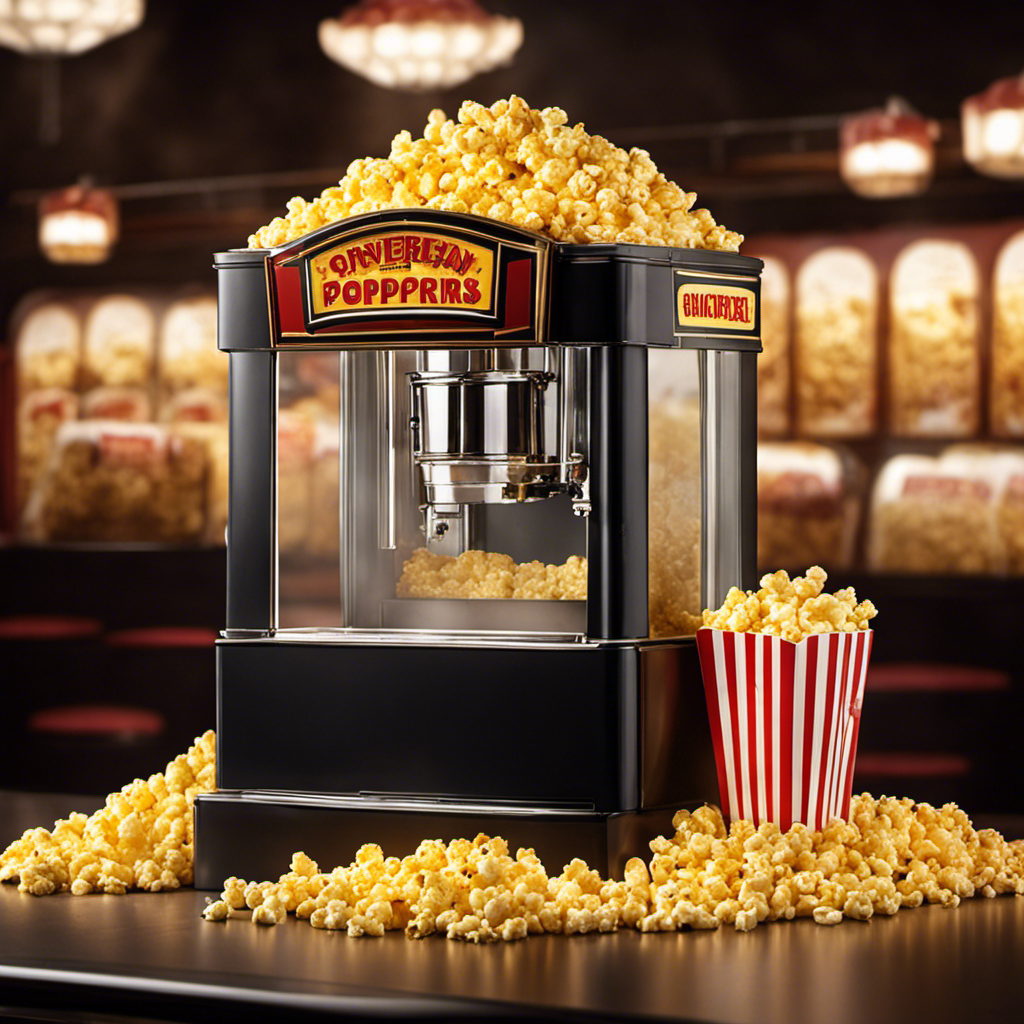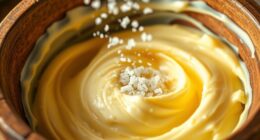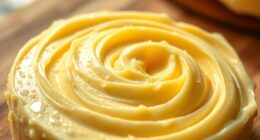I have finally discovered the secret location of the sought-after Butter Cake in Fortnite. If you feel the same way, you have likely been craving this hidden delicacy and wondering where to find it.
Well, I’m here to guide you on a thrilling adventure through the world of Fortnite as we hunt down this delectable treat. Get ready to explore hidden corners, solve puzzles, and outsmart your opponents in order to unlock the secrets of Butter Cake.
Trust me, the reward is worth every ounce of effort. Let’s dive in and satisfy our sweet tooth in the world of Fortnite.
Key Takeaways
- Butter cake can be found in various locations across the Fortnite map, including Pleasant Park, Lazy Lake, Retail Row, and Holly Hedges.
- Players need to explore specific areas in these locations to find the butter cake.
- Efficient farming routes and teamwork with squad members can enhance the hunt for butter cake.
- Butter cake is known for its rich, buttery flavor and moist texture, and has a long history originating in Europe.
Location of Butter Cake in Fortnite
You can find the Butter Cake in Fortnite by heading to the bakery in Salty Springs.
As a passionate Fortnite player, I can tell you that this is a must-visit location if you want to complete the butter cake challenges.
The bakery is situated in the heart of Salty Springs, surrounded by quaint houses and lush greenery. The aroma of freshly baked goods fills the air as you enter.
The butter cake recipes are displayed on the walls, showcasing the skill and creativity of the bakers. The challenges require you to collect the ingredients for the butter cake, such as butter, flour, and sugar, which can be found scattered around the bakery.
Completing these challenges not only rewards you with a delicious butter cake, but also adds a sense of accomplishment to your Fortnite journey.
How to Find Butter Cake in Fortnite
To locate the delectable dessert, all you gotta do is head to the designated area on the Fortnite island.
Butter cake recipes in Fortnite have become a popular addition to the game, offering players a sweet treat to enjoy during their intense battles.
These butter cake challenges in Fortnite not only satisfy my cravings but also provide a fun and rewarding experience.
The butter cake can be found in various locations across the map, making the search thrilling and unpredictable.
From cozy cafes to hidden corners, the butter cake spawn points in Fortnite are scattered throughout the island, adding an element of exploration to the game.
Butter Cake Spawn Points in Fortnite
Located in various spots across the island, these spawn points for butter cake in the popular game are sure to keep you on your toes. As a Fortnite player and cake enthusiast, I’ve scoured the map to find the best spots to satisfy your sweet tooth.
Here are the top four butter cake spawn points in Fortnite:
-
Pleasant Park: Look for the cake on the basketball court near the northern houses. It’s a hidden gem that many players overlook.
-
Lazy Lake: Head to the park area and search for the cake near the gazebo. It’s a perfect spot to grab a slice before heading into battle.
-
Retail Row: Check behind the counter at the pizza shop. The butter cake is often tucked away there, waiting to be discovered.
-
Holly Hedges: Don’t forget to explore the gardens. You might stumble upon a butter cake hidden among the flowers.
Now that you know where to find butter cake in Fortnite, it’s time to tackle the challenges that come with it. But don’t worry, I’ve got some tips to help you out.
Tips for Finding Butter Cake in Fortnite
When searching for the delicious treat, make sure to explore every nook and cranny of the specified locations.
Butter cake in Fortnite is not just a simple dessert; it’s a culinary masterpiece that requires skill and precision to create. As a passionate gamer and avid baker, I have spent countless hours perfecting my butter cake recipes.
The challenges of finding butter cake in Fortnite can be frustrating, but with perseverance and a little bit of luck, the reward is well worth it. The key is to pay attention to the in-game clues and hints, as they often lead you to hidden spots where the butter cake is waiting to be discovered.
Don’t give up, fellow gamers, and keep exploring until you find that mouthwatering butter cake!
Best Strategies for Obtaining Butter Cake in Fortnite
When it comes to hunting down Butter Cake in Fortnite, knowledge is power. In order to maximize your chances of finding this rare treat, it’s important to know the best locations where it can spawn.
Additionally, having efficient farming routes mapped out can save you precious time and resources, allowing you to quickly move from one potential cake location to another.
And let’s not forget the power of teamwork – coordinating with your squad can make the hunt for Butter Cake even more enjoyable and successful.
Rare Butter Cake Locations
You’ll find rare Butter Cake locations scattered throughout the Fortnite map. These delicious treats are a sought-after item, providing players with a valuable health boost. Here are some tips for butter cake hunting and strategies for efficient cake farming:
-
Keep an eye out for pastry shops: These quaint little buildings often hide Butter Cake treasures inside. Look for them in areas like Pleasant Park, Retail Row, or Lazy Lake.
-
Loot crates and supply drops: Butter Cakes can sometimes be found as a random drop from supply crates or supply drops. Make sure to check these out when they appear on the map.
-
Investigate food trucks: Food trucks can be found in various locations, and they sometimes carry Butter Cakes as part of their inventory. Look for them near popular POIs or along major roads.
-
Check out the cake vending machines: Cake vending machines have been spotted in some areas, allowing players to purchase Butter Cakes with their hard-earned materials. Keep an eye out for them and stock up when you can.
With these strategies in mind, you’ll be able to efficiently hunt for Butter Cakes and keep yourself fueled for the battles ahead. Happy hunting!
Efficient Farming Routes
To efficiently farm for rare treats, it’s important to explore different routes and be strategic in your approach. One effective technique is to identify efficient farming routes that cover a wide range of areas. By visiting different locations, you increase your opportunities for stumbling upon these delicious delicacies.
It’s important to be knowledgeable about the spawn points and potential hiding spots for butter cakes. Look for clues such as crumbs or the enticing aroma of buttery goodness. Passionately scour the map, using your knowledge and keen eye to spot these rare treats.
With the right strategy and effective butter cake hunting techniques, you’ll be indulging in sweet victory in no time.
Now, let’s discuss how teamwork can enhance our cake hunting endeavors.
Teamwork for Cake Hunting
Working together with your fellow hunters can greatly improve your chances of success in the quest for rare treats. When it comes to cake hunting in Fortnite, teamwork is key. Here are some strategies and techniques that can help you and your team find that elusive butter cake:
-
Communication is vital: Make sure to communicate constantly with your team members. Share information about potential cake locations, enemy encounters, and any other relevant details.
-
Divide and conquer: Splitting up into smaller groups can cover more ground and increase your chances of finding a cake. Assign specific areas or landmarks to each group, and regroup periodically to share any discoveries.
-
Support each other: Stick together and provide backup whenever necessary. Help your teammates during fights and revive them if they get knocked down. A strong team is more likely to succeed in cake hunting.
-
Be adaptable: Cake locations can change from game to game, so be flexible in your approach. Stay aware of the storm circle and adjust your search accordingly.
By employing these teamwork strategies and cake hunting techniques, you and your team will be well on your way to satisfying your sweet tooth in Fortnite.
Happy hunting!
Butter Cake Hunting Guide for Fortnite Players
Hey, have you heard about the Butter Cake Hunting Guide in Fortnite? If you’re a fan of this popular game, then you’re in for a treat!
The Butter Cake Hunting Guide is a must-have for any Fortnite player looking to complete the butter cake challenges and discover the best butter cake recipes hidden throughout the map.
This comprehensive guide will take you on an exciting adventure, leading you to secret locations where you can find these delectable treats. From the moist and buttery vanilla cake to the rich and creamy chocolate cake, each recipe is a masterpiece waiting to be discovered.
Where to Look for Butter Cake in Fortnite
If you’re craving a sweet treat while exploring the Fortnite map, there are several hidden locations where you can find the elusive butter cake. As a passionate Fortnite player, I’ve scoured the map and discovered some of the best spots to satisfy your butter cake cravings.
Here are four hidden locations to find this delectable dessert:
-
The Fancy Viewpoint: Located on a hill in the northwest corner of the map, this scenic spot offers breathtaking views and a hidden butter cake.
-
The Cozy Cabin: Nestled deep in the snowy mountains, this cozy cabin not only provides warmth but also a secret stash of butter cake.
-
The Tasty Tower: This towering structure in the heart of the city holds more than just loot. Climb to the top floor and you’ll be rewarded with a mouthwatering butter cake.
-
The Haunted Hideout: Explore the eerie depths of this haunted mansion and you’ll stumble upon a hidden room filled with butter cake treasures.
Craving more than just the in-game butter cake challenges? Try out some real-life butter cake recipes to satisfy your sweet tooth while waiting for the next Fortnite update.
Butter Cake: A Hidden Delight in Fortnite
Looking for a delicious treat to satisfy your cravings while exploring the Fortnite map? Look no further than the mouthwatering butter cake!
This delectable dessert is a hidden delight in the world of Fortnite. With its rich, buttery flavor and moist texture, butter cake is the perfect way to indulge yourself while taking on the challenges of the game.
But what makes butter cake so special? Well, it starts with a simple yet perfect combination of butter, sugar, eggs, and flour. The result is a heavenly treat that is sure to please both your taste buds and your hunger for adventure.
Unlocking the Secrets of Butter Cake in Fortnite
Ah, butter cake, the secret delight that has captured the attention of Fortnite players everywhere. Let’s dive into the world of this delectable treat and uncover its hidden locations, tantalizing effects, and the thrill of discovering it amidst the chaos of battle.
From its elusive hiding spots to the powerful buffs it bestows upon those who find it, the butter cake is a truly tantalizing mystery waiting to be unraveled.
Butter Cake Locations
There’s a few butter cake locations in Fortnite that you should check out. As a passionate Fortnite player, I’m always on the lookout for new challenges and experiences. The butter cake recipes in Fortnite are no exception.
Here are four butter cake challenges that you won’t want to miss:
-
Pleasant Park: Head to the soccer field in Pleasant Park and look for the butter cake hidden in the stands. It’s a sweet treat that will give you a boost of energy in the game.
-
Lazy Lake: Explore the houses in Lazy Lake and keep an eye out for a butter cake on the kitchen counter. It’s a delicious reward for your hard work.
-
Retail Row: Check out the stores in Retail Row and find the butter cake on a shelf. It’s the perfect snack to keep you going during intense battles.
-
Craggy Cliffs: Venture to the docks in Craggy Cliffs and discover a butter cake on a picnic table. Take a break and savor the taste of victory.
Now that you know where to find the butter cake locations, let’s uncover the secrets of the hidden butter cake.
Hidden Butter Cake
As you explore the various locations in the game, you’ll be delighted to stumble upon a hidden treat that will satisfy your cravings.
Butter cake, with its rich and buttery flavor, has long been a favorite among gamers. The best butter cake recipes are carefully crafted to create a moist and tender texture that melts in your mouth.
The history of butter cake dates back centuries, with its origins in Europe. It was originally made with simple ingredients like butter, sugar, eggs, and flour, but over time, bakers have added their own twists to create unique variations.
From classic vanilla butter cakes to decadent chocolate versions, there’s a butter cake for every taste. So keep exploring, and don’t forget to indulge in the hidden butter cake treasures you find along the way.
Butter Cake Effects
You’ll be amazed by the delightful effects that butter cake has on your taste buds. As a passionate baker, I can attest to the numerous benefits of indulging in a slice of this heavenly dessert. Let me share with you some of the reasons why butter cake is a must-try treat:
- Moist and tender texture that melts in your mouth.
- Rich and buttery flavor that leaves you craving for more.
- Versatility to be enjoyed plain or with various toppings and fillings.
- Easy and straightforward recipe that anyone can master.
To make your own butter cake, simply combine butter, sugar, eggs, flour, and a touch of vanilla. The result is a golden-brown masterpiece that will make your taste buds dance with joy.
Frequently Asked Questions
How Many Butter Cakes Can Be Found in a Single Match of Fortnite?
Finding butter cake quickly in Fortnite requires strategic gameplay. The scarcity of butter cake can greatly impact gameplay. Knowing where to look and having a plan is crucial for success in the game.
Can Butter Cake Be Used as a Healing Item in Fortnite?
Sure, butter cake in Fortnite is a delectable delight! Not only does it restore health, but it also grants additional benefits like increased shield capacity. You can find it scattered throughout the game, adding a tasty twist to your battles.
Are There Any Special Challenges or Quests Related to Finding Butter Cake in Fortnite?
Possible strategies for finding butter cake in Fortnite include exploring areas with kitchens or bakeries, checking for cake spawns in residential areas, and looting supply drops. Using butter cake can provide a healing advantage during gameplay.
Can Butter Cake Be Shared or Traded With Other Players in Fortnite?
Butter cake in Fortnite cannot be shared or traded with other players. This adds to the rarity and value of the item. Sharing rare items in online multiplayer games can have a significant impact on gameplay dynamics.
Is There a Time Limit for Finding Butter Cake in Fortnite Before It Disappears From the Map?
There is no time limit for finding butter cake in Fortnite before it disappears from the map. However, it’s important to note that butter cake is a rare item in Fortnite, and finding it can greatly affect gameplay.
Conclusion
In the wild and unpredictable world of Fortnite, finding the elusive Butter Cake is a true treasure hunt.
As you venture through the game’s vibrant landscapes, keep your eyes peeled for hidden corners and secret spots where this delectable delight may be hiding.
Imagine the sweet aroma of freshly baked cake wafting through the air, drawing you closer to your prize.
With perseverance and a keen eye, you too can unlock the secrets of Butter Cake and savor its deliciousness.
Happy hunting, fellow Fortnite enthusiasts!









